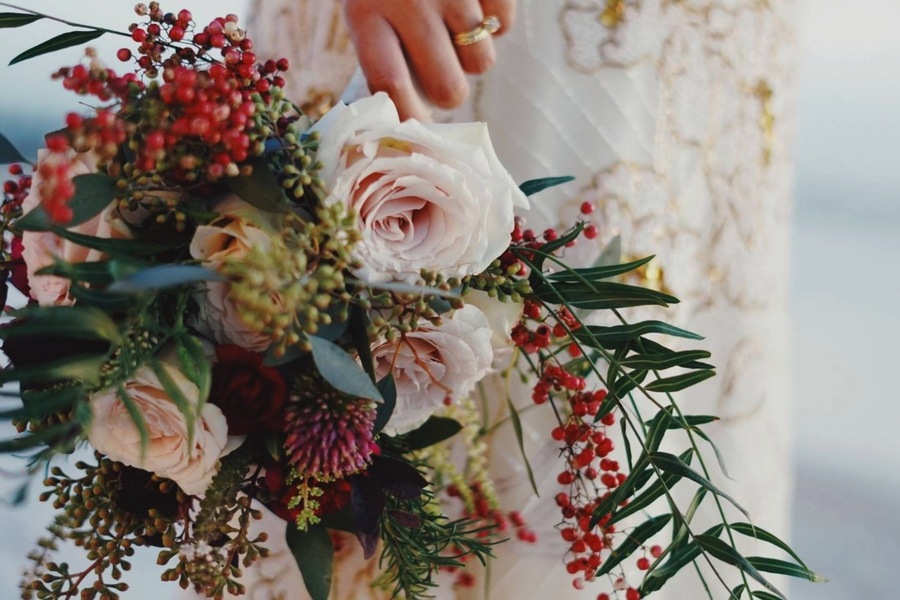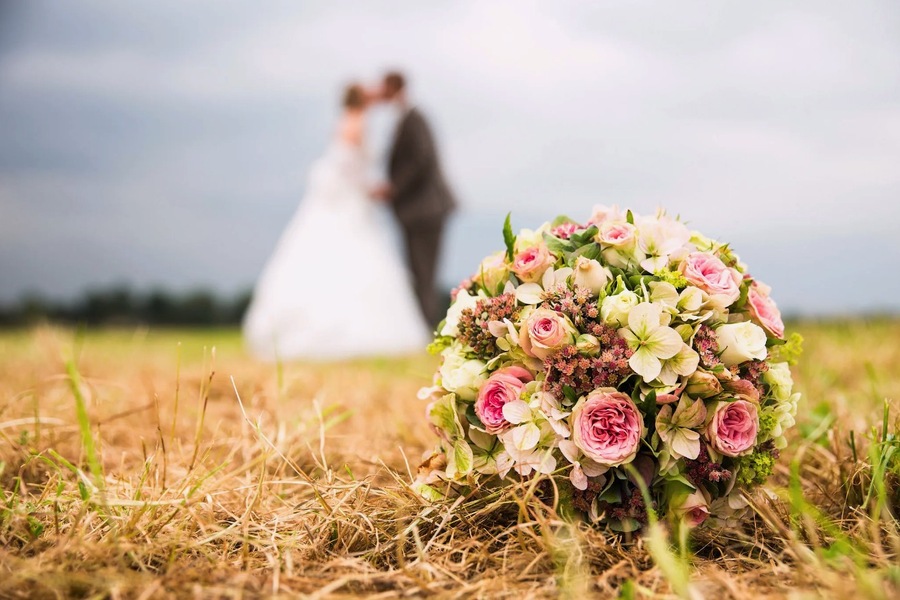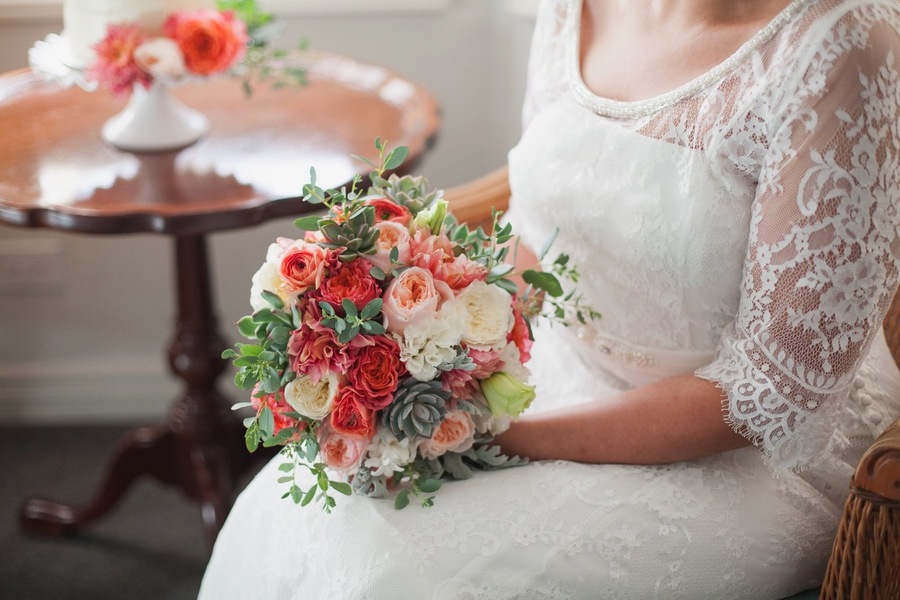A wedding signifies a momentous transition in a girl’s life, symbolizing the beginning of a new chapter filled with love, commitment, and shared dreams. Among the many elements that contribute to the perfection of this special day, the bride’s bouquet, often arranged through fresh flower delivery, stands out as both a cherished accessory and a symbolic attribute steeped in tradition. The bouquet not only complements the wedding dress but also carries deep sentimental value, representing love, happiness, and fertility.
Historical Significance
The tradition of carrying a bridal bouquet dates back to ancient times. In ancient Rome, brides would carry herbs and flowers to ward off evil spirits and bring good luck to the couple. This practice evolved during the Middle Ages, when strong-smelling herbs and spices were added to bouquets to protect against disease and illness. Over the centuries, the bridal bouquet has transformed into a symbol of love and fidelity, an accessory that completes the bride’s look, and a treasured keepsake from the wedding day.
How to Choose the Perfect Wedding Bouquet
Choosing the right bouquet is essential to ensure it complements the overall theme and style of the wedding. Here are some key considerations:
Complement the Dress
The bouquet should harmonize with the color and style of the bride’s dress. For example, a bride in a classic white princess dress might opt for a neat round bouquet of delicate roses in pastel shades with a touch of greenery. For a modern, minimalist dress, a sleek bouquet with orchids or calla lilies might be more appropriate.
Reflect the Wedding Theme
The bouquet can highlight the chosen theme of the celebration. For a glamor-style wedding in a luxurious setting, a bouquet with lush peonies, ranunculus, or David Austin roses would be fitting. On the other hand, a rustic, outdoor wedding might call for a more natural and wildflower-inspired arrangement.
Consider the Season
Instead of insisting on a particular type of flower, focus on the overall color palette of the celebration and choose flowers that are in season. This approach ensures the flowers are fresh and vibrant. Seasonal flowers not only look their best but are also more sustainable and cost-effective.
Pay Attention to the Scent
The scent of the flowers should be light and unobtrusive, complementing the bride’s perfume rather than overpowering it. Strong scents can be overwhelming and may cause discomfort to the bride or guests.
Personal Preference
Ultimately, the bouquet should include flowers that the bride truly loves, adding a personal touch to the special day. The bouquet is a reflection of the bride’s personality and tastes, making it unique and meaningful.

Popular Types of Wedding Bouquets
Brides have a variety of bouquet styles to choose from, each offering a unique look:
Round Bouquets
A classic option that suits many wedding styles, round bouquets are typically composed of flowers arranged in a neat, spherical shape. This style is timeless and elegant, perfect for traditional weddings.
Cascade Bouquets
These bouquets are shaped like a drop, with the upper part featuring the majority of the flowers, large and open, while the lower part has trailing lines of smaller, half-closed buds and branches. Cascade bouquets are dramatic and eye-catching, ideal for brides looking to make a statement.
Asymmetrical Bouquets
For a more modern and eclectic look, asymmetrical bouquets have a non-standard shape without clear lines or dense structure, offering a more natural and relaxed appearance. This style is perfect for bohemian or contemporary weddings.
Popular Flowers for Wedding Bouquets
Certain flowers are particularly favored for wedding bouquets due to their beauty and symbolic meanings:
Roses
Roses are versatile and elegant, suitable for both mono-bouquets and mixed compositions. They symbolize love and romance, making them a popular choice for weddings.
Peonies
Ideal for mono bouquets or various combinations, peonies symbolize prosperity and romance. Their lush, full blooms add a touch of luxury to any bouquet.
Orchids
Known for their durability, orchids can maintain their fresh appearance for weeks, symbolizing beauty and strength. They add an exotic and sophisticated touch to bouquets.
Tulips
The color of tulips can convey different meanings: lilac tulips symbolize favor and patience, while burgundy tulips symbolize passionate feelings. Tulips are versatile and can fit various wedding themes.
Hydrangeas
These flowers symbolize agreement and mutual understanding, adding volume and texture to bouquets. Their large, fluffy blooms create a sense of fullness and elegance.
Gerberas
Gerberas symbolize joy and cheerfulness, adding a bright and happy touch to the bouquet. They are available in a wide range of colors, making them suitable for various themes.
Alstroemeria
Also known as the Peruvian lily, alstroemeria symbolizes friendship and loyalty, making it a heartfelt addition to any bouquet. Their delicate, intricate blooms add a touch of elegance.
Eastern Casablanca Lily
Representing beauty, purity, and peace, this lily adds an elegant touch to bridal bouquets. Their large, white blooms are perfect for classic and formal weddings.
Gypsophila
Commonly known as baby’s breath, gypsophila symbolizes purity and innocence and is often used as a filler to add a delicate touch to bouquets. They complement larger blooms and create a soft, romantic look.

The Emotional Significance of the Bridal Bouquet
Beyond its aesthetic appeal, the bridal bouquet carries deep emotional significance. It is a tangible representation of the bride’s hopes and dreams for her marriage. The act of choosing the flowers, the arrangement, and the colors is a personal journey that reflects the bride’s individuality and vision for her wedding day.
The bouquet also plays a role in various wedding traditions and rituals. One of the most well-known traditions is the bouquet toss, where the bride throws her bouquet over her shoulder to a group of single women. The belief is that the woman who catches the bouquet will be the next to marry, adding a fun and hopeful element to the celebration.
Preserving the Bridal Bouquet
Many brides choose to preserve their bouquet as a keepsake of their special day. There are several methods for preserving flowers, including drying, pressing, and freeze-drying. Preserved bouquets can be displayed in shadow boxes, glass domes, or used to create other mementos such as jewelry or ornaments. This allows the bride to cherish the memories of her wedding day for years to come.
Conclusion
The bridal bouquet is more than just an accessory; it is a meaningful symbol that adds depth and beauty to the wedding ceremony. By carefully selecting a bouquet that complements the dress, reflects the wedding theme, and includes flowers the bride loves, this cherished accessory becomes a lasting memory of a day filled with love, joy, and new beginnings. Whether you opt for classic roses, lush peonies, or exotic orchids, the perfect bouquet will enhance the beauty of the bride and the significance of the wedding day.

Skier, father of 3, drummer, International Swiss style practitioner and RISD grad. Acting at the intersection of modernism and elegance to craft experiences that go beyond design.
